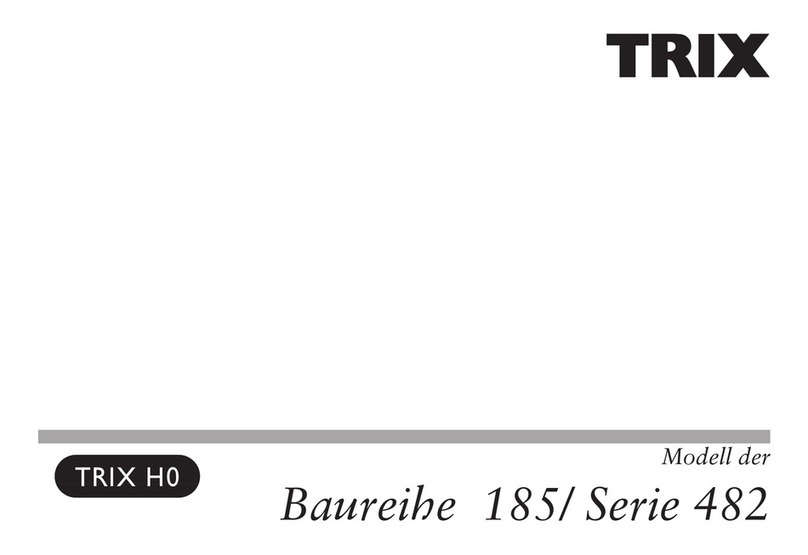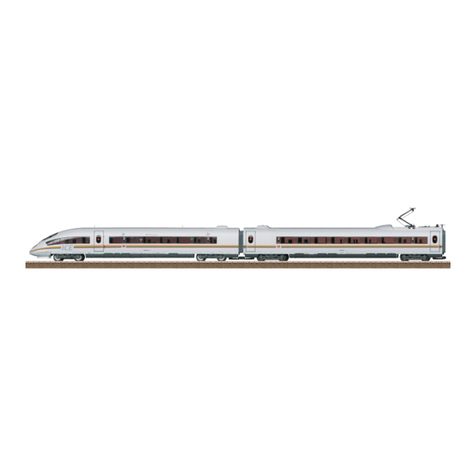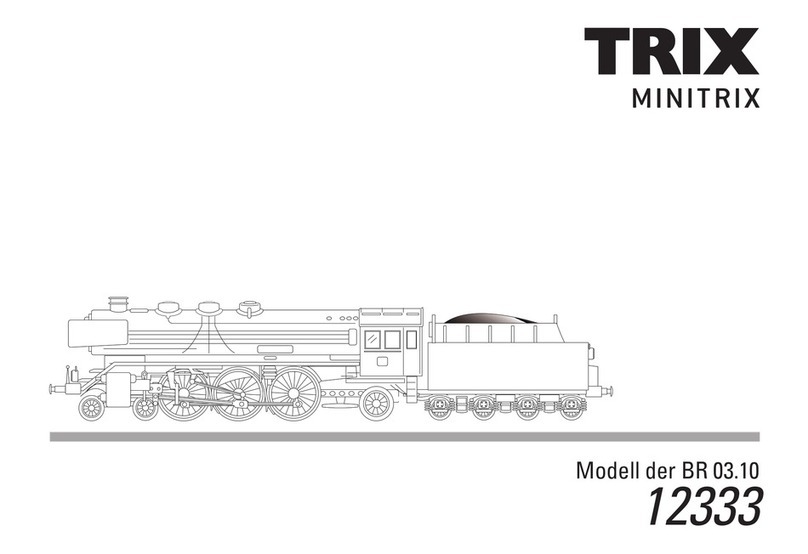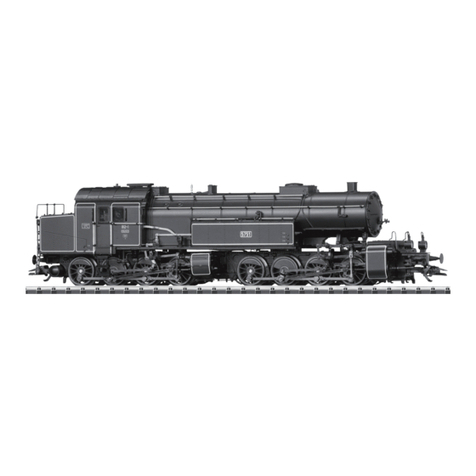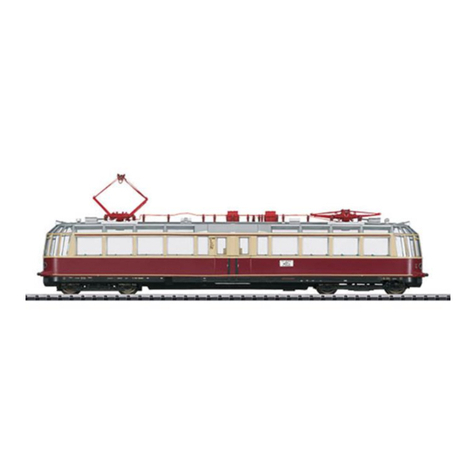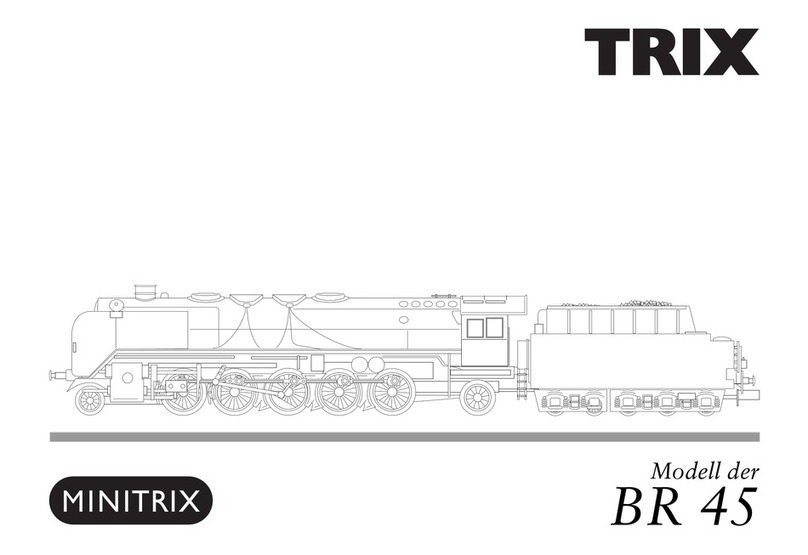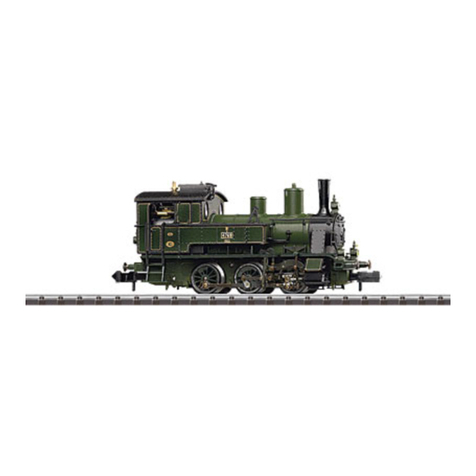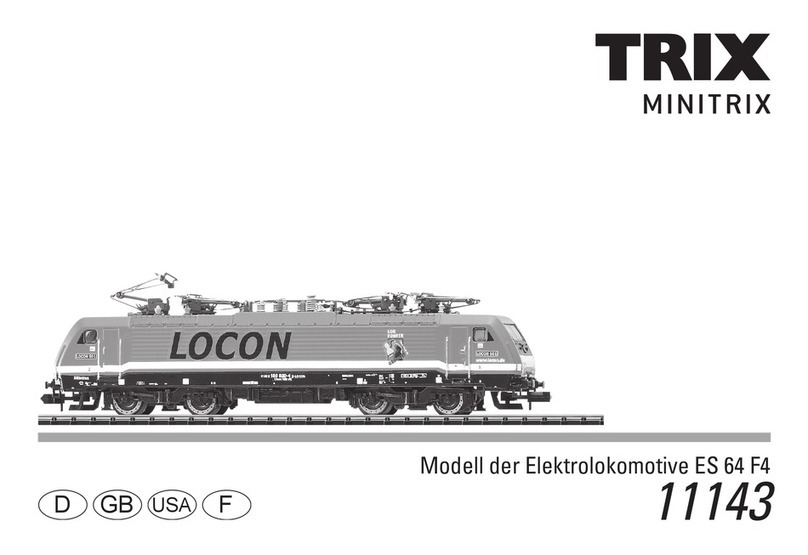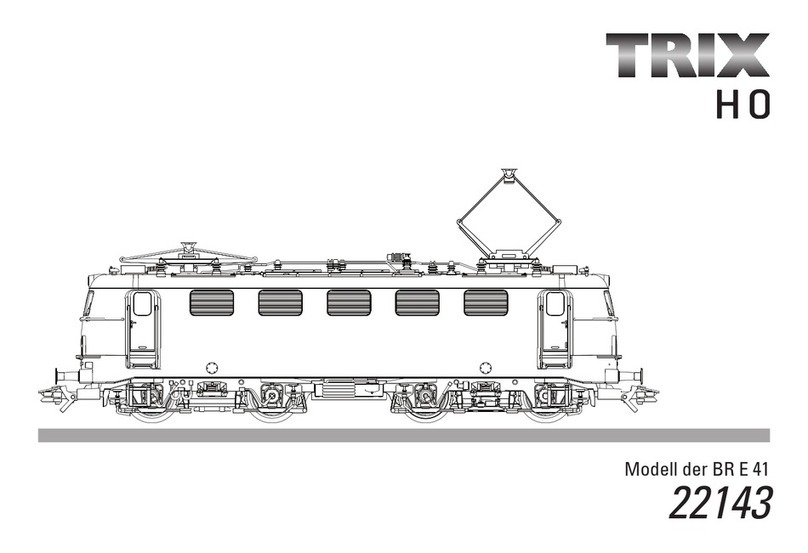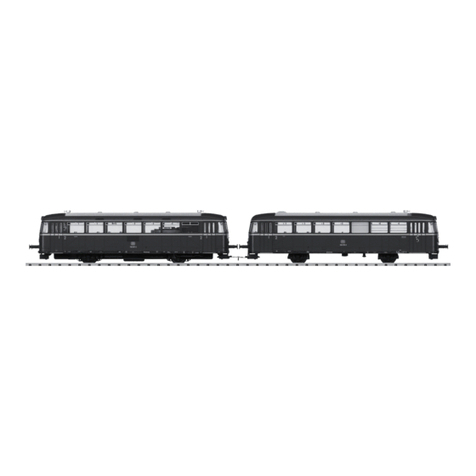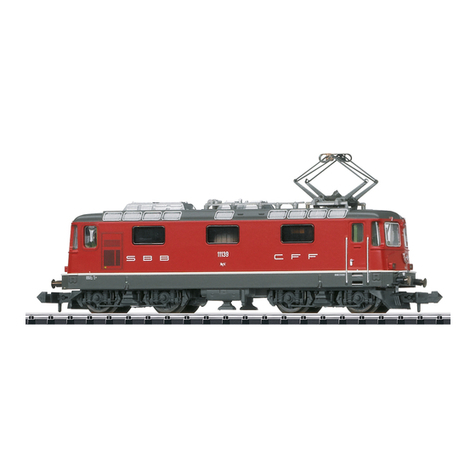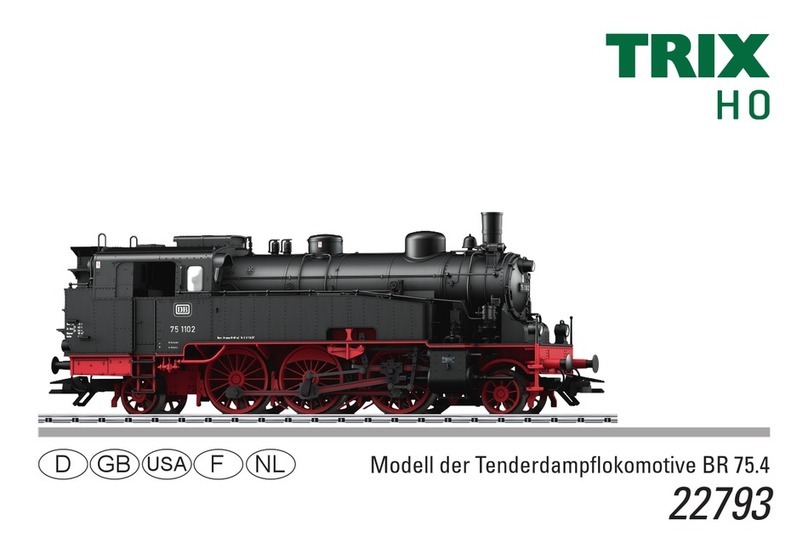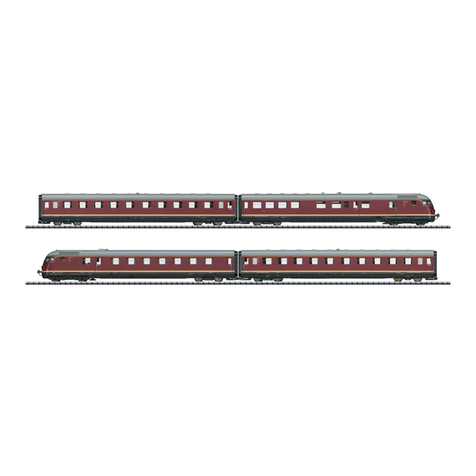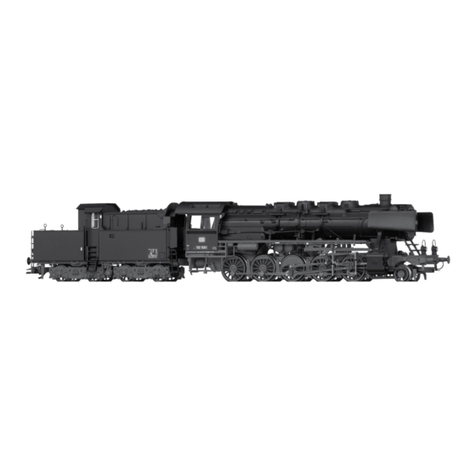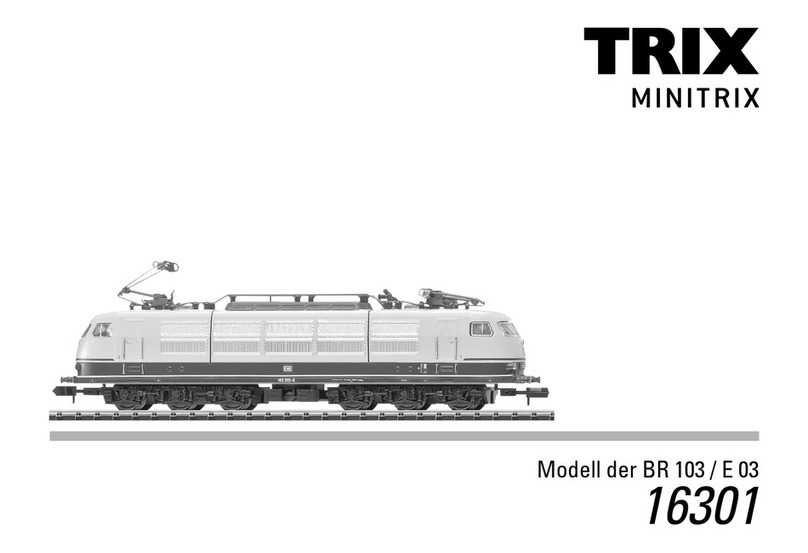8
ou dommages apparus. C‘est à la persone et/ou la société respon-
sable du montage/de la transformation ou au client qu‘incombe la
charge de prouver quer le montage des pièces d‘autres fabricants
sur des produits Trix ou la transformation des produits Trix n‘est
pas à l‘origine des défauts et ou dommages apparus.
Remarque concernant l‘exploitation Selectrix:
Si une locomotive roule en sens contraire dans une
zone de freinage activée, les feux de signalisation sont
coupés dans cette zone. Une fois la locomotive passée
outre la zone de freinage, les feux se rallument.
Remarques relatives au fonctionement en mode digital:
• En ce qui concerne la procédure de réglage des
divers paramètres, veuillez vous référer au mode
d‘emploi de votre centrale de commande multitrain
(par ex. Mobile Station).
• Les valeurs encodées en usine ont été sélectionnées
pour garantir une exploitation exempte de problèmes.
•
En usine, c‘est l‘adresse „03“ (Selectrix) / „03“ (DCC) qui
est programmée pour une exploitation digitale de cette
• En cas d‘exploitation numérique DCC, une alimenta-
tion des sections de freinage avec du courant continu
de polarité contraire n‘est pas possible à cause des
réglages faits en usine. Si cette option est désirée, il
faut alors renoncer à une exploitation conventionelle
et modifier les réglages (CV 29 / bit 2=0).
•
Les défaillances au niveau du fonctionnement, découlant
de la modification des réglages faits en usine sur le
système électronique de la locomotive, sont déclenchées
par l‘opérateur et ne constituent par conséquent aucune
raison de réclamation; elles ne donnent de ce fait aucun
droit de recours en garantie contractuelle ou commerciale.
Fonctionnement
• Une sécurité électronique protège le modèle contre
toute surcharge éventuelle.
• Feux triples avec alternance selon sens de marche.
• Electronique intégrée pour exploitation au choix avec
transformateur-régulateur conventionnel délivrant du
courant continu, avec Selectrix ou avec des sastèmes
de vonduite digitale conformes aux normes NMRA.
• Le mode d‘exploitation est automatiquement détecté.
• Analogique 14 volts =, digital 22 volts ~.
Remarque sur la sécurité
•
La totalité des fonctions du décodeur ne peut être assu-
rée que par l‘emploi desappareils de commande Trix.
• Pas pour appareils de commande avec pilotage par
impulsion de largeur variable.
• Pas pour éclairage de train permanent sur réseaux
analogiques.
• Pas pour Trix-ems.
• La locomotive ne peut être alimentée que par une
seule source de courant à la fois.
• La locomotive ne peut être mise en service qu‘avec
un système d‘exploitation adéquat.
• Veuillez impérativement respecter les remarques sur
la sécurité décrites dans le mode d‘emploi en ce qui
concerne le système d‘exploitation.
Tout recours à une garantie commerciale ou contractuelle ou à
une demande de dommages-intérét est exclu si des pièces non
autorisées par Trix sont intégrées dans les produits Trix et/ou si les
produits Trix sont transformés et que les pièces d‘auftres fabricants
montées ou la transformation constituent la cause des défauts et/


